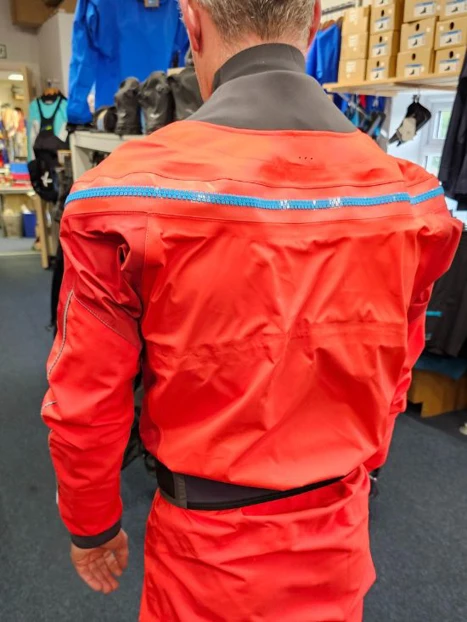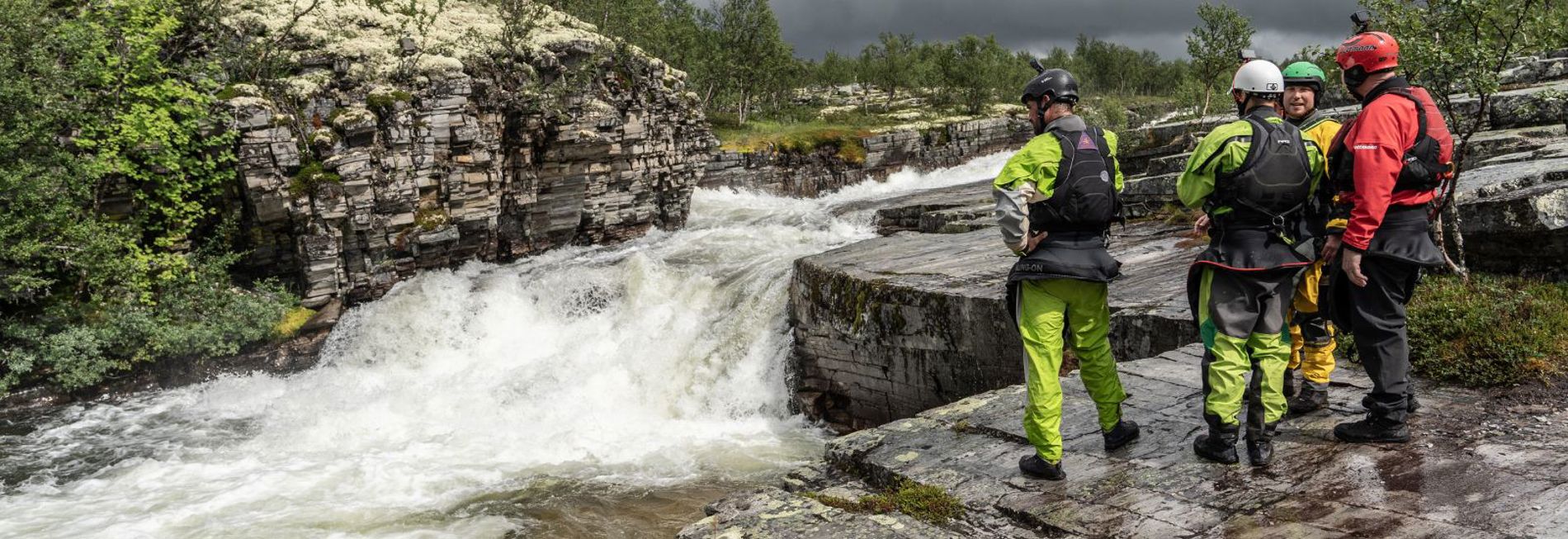Want to learn more about drysuits?
- What should I wear under a drysuit?
Your drysuit acts as a shell keeping you dry and protected from the wind. However you will need some insulating layers beneath it to keep warm.
One piece thermals such as the Palm Tsangpo suit are great options and are available in both mens and womens fit. Using a one piece suit means less bulk where layers overlap and prevents any ' gapping' that might occur between separate top and bottom layers.
Our top tips are:
- Choose synthetic fabrics that wick away moisture from you skin - the last thing you want is to get sweaty and damp!
- Paddle specific thermals are cut to avoid chaffing under the arms and are usually nice and stretchy to allow plenty of movement for paddling
- Make sure your thermals allow you to use the suits relief zips easily
- Dont forgot your feet! Keep your feet toasty with a nice pair of Tsangpo Socks!
- How should I look after my drysuit?
Having invested in your suit its important to look after it so it will continue to keep you dry and warm for as long as possible! This is our checklist for looking after our own kit
- Remember to dry it out after use! A damp suit left in a bag wont last long!
- Prevent pinholes in the socks by using a changing mat when taking the suit on and off and avoiding walking around without a shoe on.
- The zip is susceptible to damage when it is only part undone. Depending on the type of zipper you will want to keep it fully open or fully closed when in storage (Metal Zipper = Zip open / Plastic Zipper = Zip Closed)
- Keep the zip flat and straight when folding or storing your garment. Don’t fold the garment across the zip as this can break the teeth. Loosley rolling you suit from the socks up works well if you cant hang it up
- Lubricate your zip periodically with beeswax or a silicone lubricant, like McNett Max Wax, for BDM brass coil zips; TiZip silicone grease for plastic MasterSeal zips; or YKK Ziptech lubricant for AquaSeal zips.
- If you suits need a clean handwash it at a maximum temperature of 30 °C. We recommend Grangers Performance wash detergent
- Check your seals every so often and get them replaced as needed. Oil based products like sun screen will reduce the life span of your latex seals.
Thats it! If you do find your suit isn't as dry as it used to be get in contact and we can help by organising and dealing with repairs and warranty claims.
For more information please see our video on dry suit care below
- Whats the difference between back entry and chest entry suits?
A back entry or shoulder entry suit uses a zipper that runs horizontally across your back from shoulder to shoulder, while a chest entry zipper generally runs across the front of the suit from your shoulder to the opposite hip.


- Shoulder entry suits can be zipped up on your own but it takes a little bit of flexibility and practise
- A chest zipper will cross under your buoyancy aid which some people find a little uncomfortable. Modern low profile plastic zips make this less of an issue
- If the chest zipper splits the twin waist tube it can result in a little more water getting into the kayak. Look for suits with additional zip covers if this concerns you eg the Kokatat Meridian
- Shoulder entry suits mostly closely resemble the feel of a dry cag making them more comfortable to paddle in
- It can be easier to get your head through the seal in a back entry suit as opposed to a chest entry especially if you're at the top end of the suggested height on the size guide
There are pros and cons for each which you should consider when deciding on your suitTypically a chest entry makes it easier to open and close the zipper yourself, plus you can quickly check that zipper is completely done up!
- Why is the neck seal so tight?
If the neck seal on your new suit feels like its choking you don't panic it's pretty common and you have a few options to deal with it
- Make sure the seal is flat against your neck rather than rolled up on itself. This should make it more comfortable and drier!
- New seals will stretch fairly quickly after being worn a few times. If you want to speed this process up pop something like a bowl in the seal and leave it for a bit
- If after stretching the seals out you still find it too tight then it is possible to cut down the seal using a sharp pair of siscors and following the lines on the seal. Be warned though if you trim too much off, or the seal hasn't stretched out yet you could end up with a loose seal that leaks!
